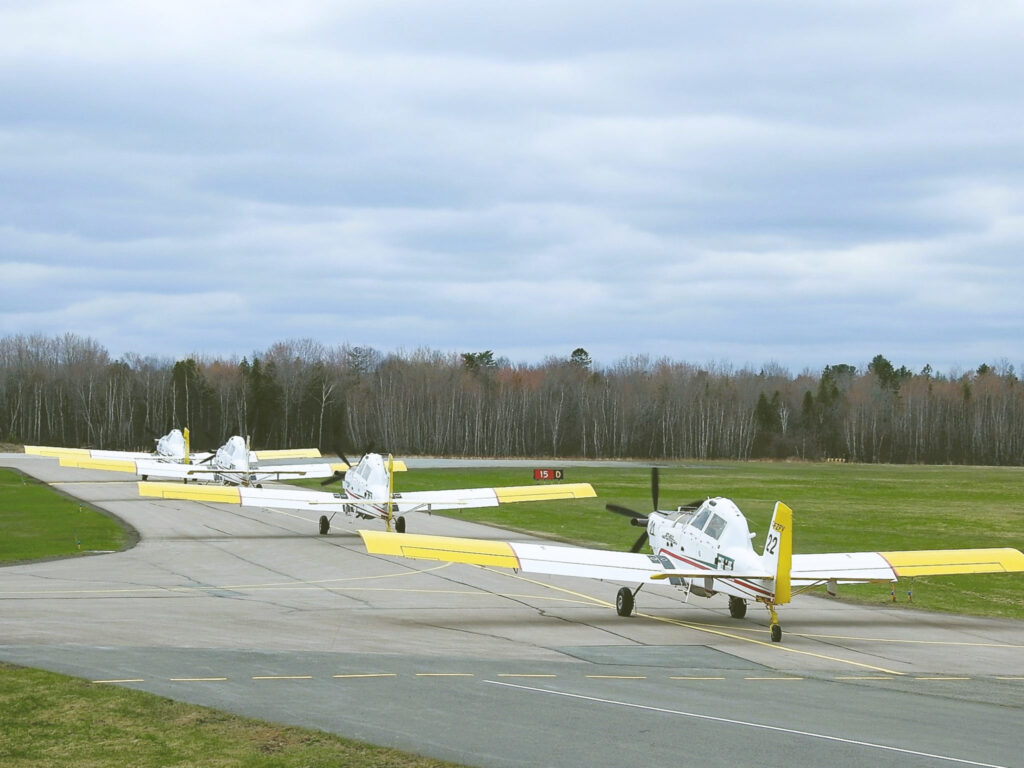With ground training completed, the Forest Protection’s aerial firefighting team takes to the skies for fire flight practice.
Crews practice dropping water or fire retardant from an aircraft in a controlled environment to simulate real-life firefighting scenarios. This training is crucial for the safety and effectiveness of aerial firefighting operations, as it helps pilots and crews develop skills to work efficiently and safely in challenging environments.
Fire flight formation is an aerial firefighting strategy that involves several airplanes working together to extinguish a wildfire. The formation consists of a lead plane (bird dog) followed by one or more tankers carrying fire retardant or water. The bird dog plane locates the fire and directs the tankers to the target. The tankers then drop their retardant or water on the fire or create a fire control line as a barrier to slow and stop the wildfire’s progress.
The flight formation is highly effective in combating wildfires, especially in remote areas where ground firefighting crews may not have easy access. By working together, the planes can cover large areas quickly and efficiently, containing the fire before it can spread further.
Despite its effectiveness, the fire flight formation is not without risks. Pilots must be highly skilled and experienced to navigate challenging conditions, including high winds, low visibility, and uneven terrain. The planes must operate in close proximity which requires excellent communication, coordination, and teamwork.
The fire flight formation is an essential tool in the fight against wildfires, helping to protect lives, property, and natural resources. By working together, firefighters can contain fires quickly and efficiently, minimizing their impact on the environment and the community.
Learn more about supporting aerial forest fire suppression with FPL’s Air Tanker Loaders.

